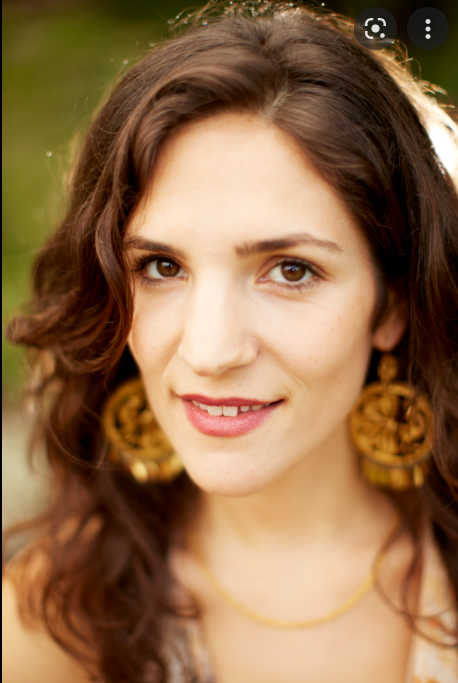June 17, 2022

For Adrienne Shamszad, music isn’t merely a vehicle for self-expression. Writing and performing original songs has opened a portal to her Iranian ancestry, an ongoing journey that’s taken her deep into an ancient classical tradition.
She came out of epidemic seclusion last month to resume performing in Berkeley, California. “I’ll be playing songs I’ve written over the pandemic, and some pieces I started on before,” she said before her performance. “There are a few songs in Farsi. What I have to offer in this show is all the love and healing and care that I’ve been trying to put into my songs through this time.”
Shamszad also backs herself on acoustic guitar and setar. With the support of a grant from the Alliance for California Traditional Arts, she spent the last year studying setar with Atabak Elyasi. Now living in North Berkeley, the Iranian-born master is best known for his work as a composer and arranger with his wife, vocalist Mahsa Vahdat, with whom Shamszad has also studied.
“Atabak is a wonderful combination of a teacher, artist, composer, and visionary,” she said. “Classical music can be very focused, but he’s looking to awaken more of my musical voice, helping me tell my story. Because Atabak and Mahsa are both deeply rooted in the tradition and very much on the cutting edge, it’s like working with someone as a producer and a guide.”
In many ways, Elyasi is ideally placed to mentor Shamszad. Deeply versed in both Persian and Western classical music, he has long worked at the confluence of traditions, drawing on jazz and Western music in crafting harmonic settings for Vahdat’s melodies.
In helping Shamszad find ways to incorporate traditional influences, Elyasi has focused on techniques relating to improvisation, “the most important thing in Persian classical music,” he said. “Ornamentation is a very important part of the expression and she’s looking to improvise based on modes and intervals. She’s very talented and smart, and has courage in mixing ideas together.”
“The music is a blend of my own spiritual questing, with elements of jazz and blues, some ethereal sounds, and a little bit of show tunes,” said Shamszad.
Planning to release a new single every month through the fall, Shamszad said it’s music she recorded after her 2009 debut album “A New Life,” but that the self-described “recovering perfectionist” never ended up releasing.
“I recorded tons of material, but didn’t have the confidence, infrastructure or strategy to share it,” she said. “I have grown immensely as a singer, guitar player, songwriter, and as a woman since I recorded these songs. I can hear how much I’ve grown. I want to fight for that young woman, and it doesn’t matter if it’s perfect or not. There’s so much truth and rawness in the performances.”
A good deal of her creative growth has been inspired by her exploration of the Persian side of her Iranian-American identity after growing up in a family where her Iranian-born father had shed his connections to the old world. Getting acquainted with Farsi and delving into the classical verse of Persian-language poets like Hafez, Rumi and Baba Taher deeply inflected her songwriting while “the setar has really helped open up my approach to guitar and composition, sort of liberating my left hand,” she said.
“Learning Iranian traditional music from Mahsa and Atabak has given me the clarity of where I’ve been writing from. Playing setar and singing in English, having an instrument that links me to the two worlds, I feel a lot more integrated. This poetry is a link to these ancestors. It’s been like a bridge I’ve gotten to cross and I’m at the threshold of a deeper dive.”
